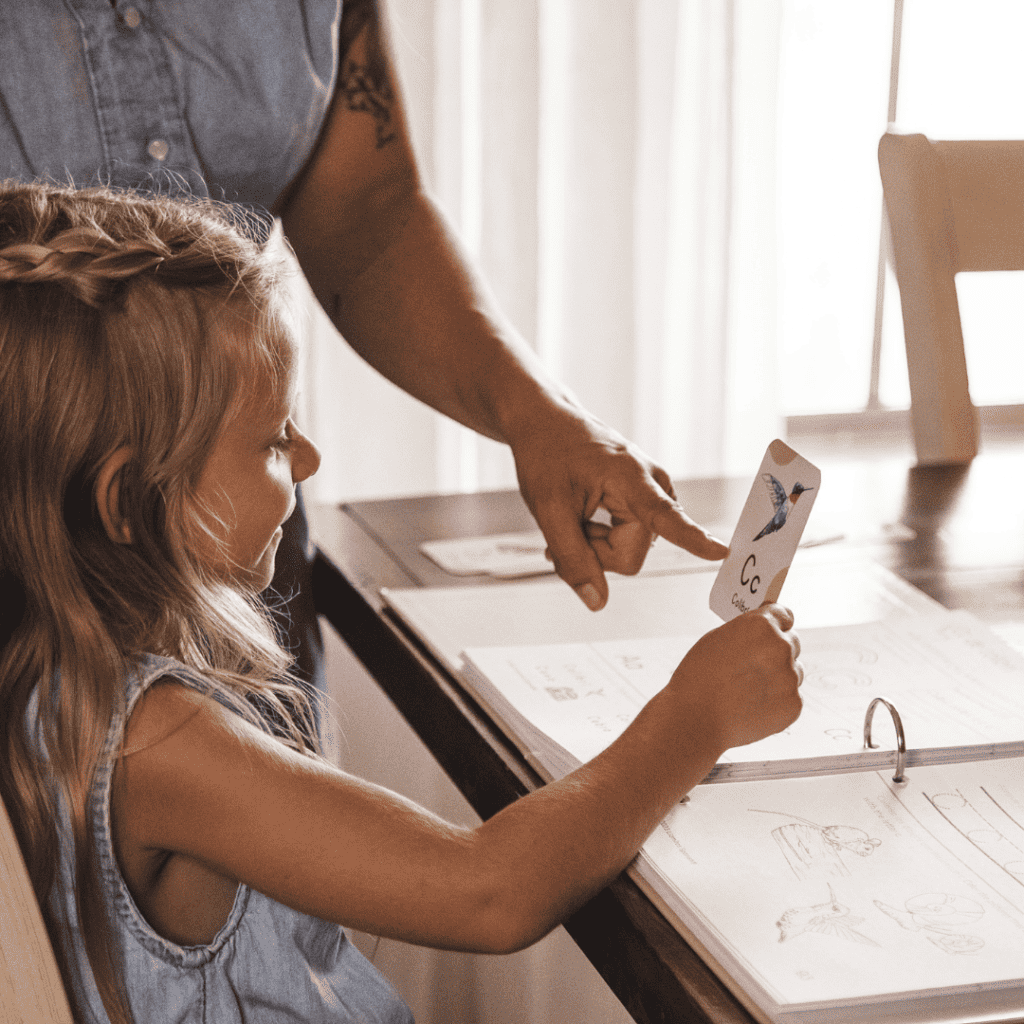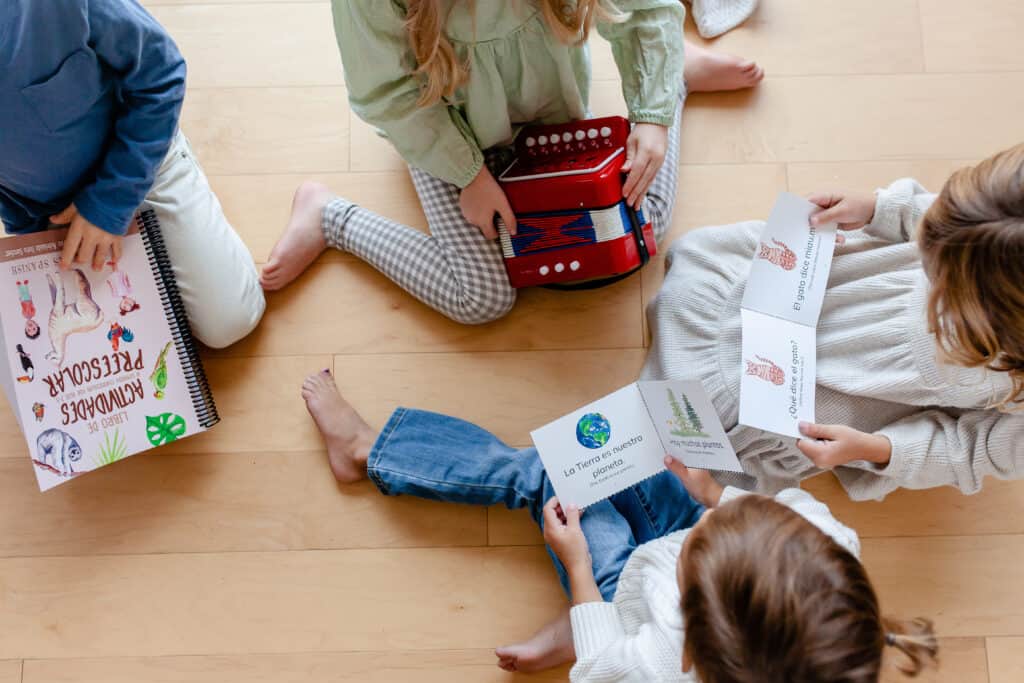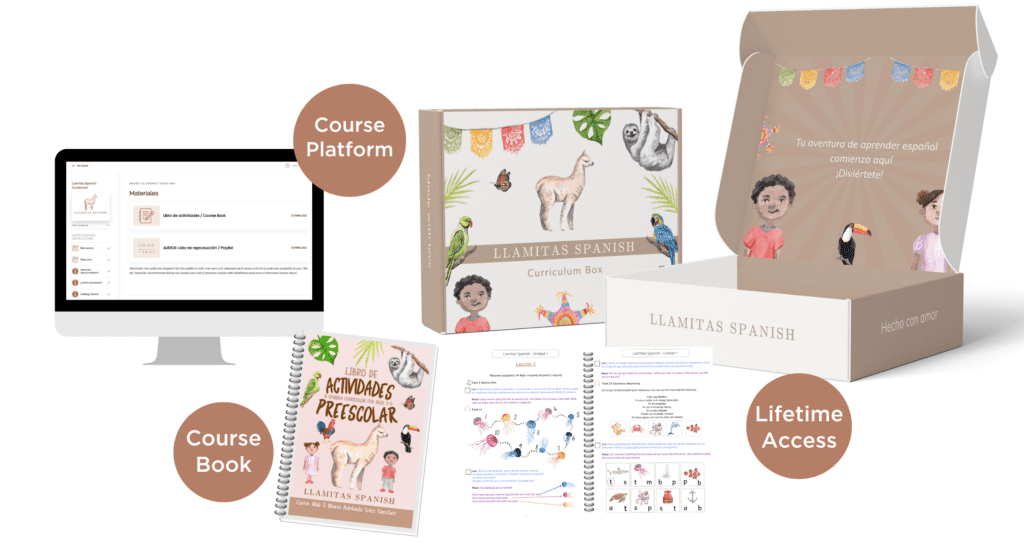In this post: Learn how to give your child’s reading fluency a boost with Spanish sight words and high frequency words.
Did you know that Spanish is one of the easiest languages for native English speakers to learn?
It’s true! Looking at factors like grammar, pronunciation, and the writing system, Rosetta Stone has ranked the world’s most popular languages by how quickly learners can become proficient, and Spanish is right there at the top.
Part of why Spanish is so easy to learn is because it’s a phonetic language. Unlike other Latin languages that have many silent letters and confusing pronunciation rules, Spanish is very straightforward. If a letter is there, you almost always sound it out—with the exception of “h” being silent (as in “hola”).
This makes learning new vocabulary and sight words relatively simple, which is great news if you’re looking to improve reading fluency in Spanish.
Let’s take a look at Spanish sight words and how you can start teaching them to your child.
This post contains affiliate links. As an Amazon associate, this site earns from qualifying purchases.
Table of Contents
What are Sight Words in Spanish?
Spanish sight words are words that can be recognized instantly by sight. Rather than using phonics to sound out the letters in a word, readers can learn to read some words automatically by recalling them from memory.
Learning sight words is a typical part of any preschool or kindergarten curriculum. But you may be wondering: What exactly makes something a sight word?
Technically, any word can be a sight word, as long as the reader memorizes it and can read it by sight. In English, sight word lists often include high frequency words as well as non-phonetic words (words that can’t be sounded out).
Since Spanish is a phonetic language, however, any word can be sounded out, so sight word lists often focus on the most common words in Spanish.
High Frequency Spanish Words vs. Spanish Sight Words
The terms “sight words” and “high frequency words” are often used interchangeably, but there’s a difference. High frequency words are the words that appear most frequently in text.
While sight words can be high frequency words, not all of them are.
High frequency Spanish words are words that you’ll hear and see often everyday. Simple nouns and verbs, pronouns, and prepositions are common types of high frequency words.
Spanish sight words and high frequency words aren’t necessarily always the same, but there’s certainly a lot of overlap!
Related post: Should Your Kids be Learning Phonics in English and Spanish at the Same Time?
How do Sight Words Support Spanish Literacy?
Research has found that learning sight words is an important step toward reading fluency (Blackwell & Laman). This is because it enables readers to spend less time sounding out and decoding the words in front of them, instead focusing on the meaning of the text.
Learning sight words in Spanish will help to improve:
- Reading fluency through word recognition
- Spelling and phonemic awareness
- Vocabulary
- Comprehension
Not only will sight words help your child read in Spanish at a faster pace, but they’ll also help them to better understand what they’re reading. By improving spelling and phonemic awareness, sight words can also enhance writing skills.
As you can see, learning sight words and high frequency words supports your child’s Spanish literacy in multiple ways! You don’t want to skip this important step toward learning to read in Spanish.
Related post: How to Help Your Bilingual Struggling Reader
Activities to Support Learning Spanish Sight Words
When teaching Spanish to young kids, it’s essential to make the experience fun with age-appropriate activities. Kids learn through play, and there are plenty of creative ways to teach your child other than simply drilling sight words.
Instead, make liberal use of music, games, and books—your child might not even realize they’re learning (though they definitely are!).
Music
Did you know that incorporating music in the classroom can actually improve language learning? Learning words and phrases along to music, rhythm, and melody makes the new material more memorable. Plus, research has found that music lessens students’ anxiety when learning a language (Stansell 2005).
Why not leverage screen time with some fun Spanish kids songs? There are so many amazing resources for teaching Spanish with music and nursery rhymes on YouTube that make this easy. Look for songs with memorable melodies and easy-to-read words displayed throughout the video.
Games
When I was teaching, I loved coming up with word games to include in my lesson plans, and my students always had a good time with these. Learners of any age can appreciate a fun challenge or competition!
While you can come up with loads of activities with a simple set of flash cards or even a pen and paper, here are a few ideas to get you started:
Word hunt: This is a great option for learning simple nouns in Spanish. Create a list or use flash cards of items around the house, yard, classroom, or neighborhood. Have your kids read the word before finding the item and marking it off their list.
Charades or pictionary: These are always great impromptu activity options, especially when you have a few people or a group, though you can always do it with less people. Simply have everyone take turns drawing sight words to act out or draw. You can make it competitive or just guess what the word is for fun.
Matching game: To set up a sight word matching game, you’ll need two cards for each word: one in Spanish and one in English or one card with the word and one matching picture card. For younger kids, simply have them match the word to the picture. For older kids, you can flip the cards over for an added memory game-style challenge!
Snowman: Think of this as a friendlier version of “hangman.” One person draws or chooses a word and writes blank spots for each letter. The others take turns guessing letters until they know the word. Instead of making the classic stick figure with each wrong letter, draw different parts of a snowman (circles, stick arms, carrot nose, etc.).
Bingo: Another classic! If your kids are old enough to write, they can write the sight words down on their board themselves. Read off sight words until someone gets a bingo, then clear off the boards and play again.
Word path: This is a great one for burning some energy. Tape large sight word cards onto the ground in a path, making sure there are plenty of twists and turns. Your child must read each word correctly before proceeding to the next step in the path! You can do this inside or outside, but make sure your cards are taped down well to prevent slips.
Word puzzles: Make use of online word search and crossword generators to make your own sight word puzzles. These are simple to use and you can enter any words that you’d like, so creating themed puzzles or focusing on certain types of words (verbs, nouns, etc.) is no problem.
Arts & Crafts
Being able to connect images with Spanish sight words is a great way to help your child commit them to memory. That’s why arts and crafts can be a great option for sight word practice.
You could try creating artwork to represent different words, doing tracing activities, finger painting, or even writing in sand or shaving cream.
We also love Montessori sandpaper letters for building easy words!
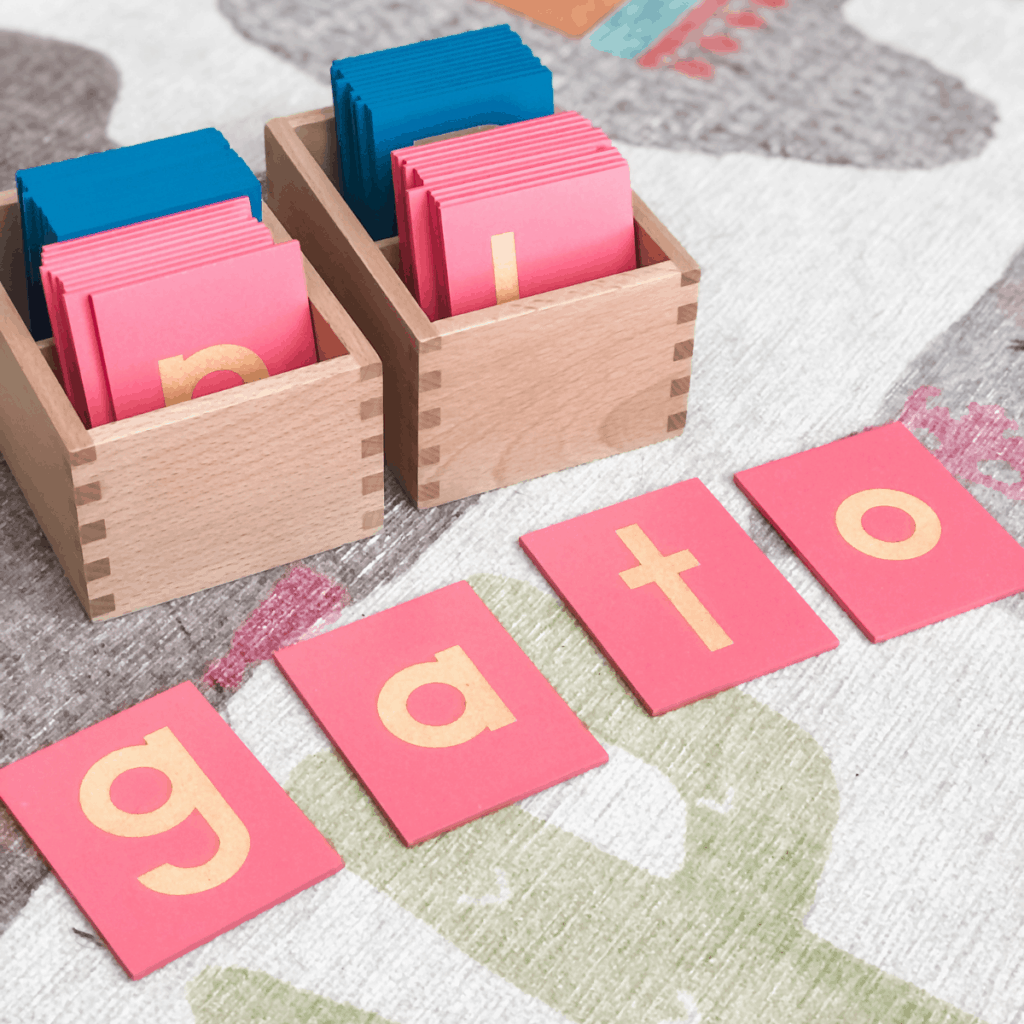
Books
Of course, you can’t forget about books for working on sight words. Picture books and leveled reader books are especially good for building confidence in young readers with their simple language and engaging illustrations.
After practicing Spanish sight words through games and music, it will be amazing to see your child actually start to read those words on the pages of a book!
Check out our collection of book round-up posts for all the seasons! These are great for early readers to add to your library.
First 100 High Frequency Words in Spanish
You can download our complete list of over 100 Spanish sight words in our Freebie Library, along with tons of other awesome resources. You’ll also get printable thematic lessons, games, access to our music playlist for kids, and more helpful tips and resources for learning Spanish.
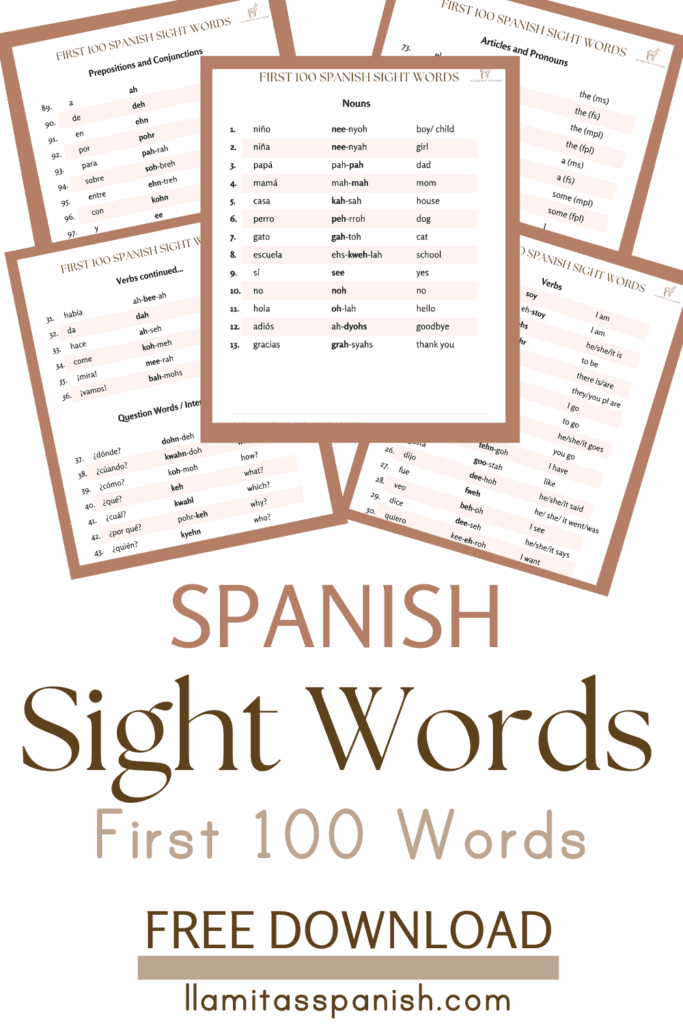
That’s right—you can start teaching your kids Spanish for free today!
Take a look at our list of 100 Spanish sight words with English translations provided.
Nouns
| Spanish Sight Word | English Translation |
| niño | boy, child |
| niña | girl |
| mamá | mom |
| papá | dad |
| casa | house |
| perro | dog |
| gato | cat |
| escuela | school |
| sí | yes |
| no | no |
Verbs
| Spanish Sight Word | English Translation |
| soy | I am |
| estoy | I am |
| es | is |
| ser | to be |
| hay | there is/ there are |
| son | they/ you (plural) are |
| voy | I go |
| ir | to go |
| va | he/she/it goes |
| vas | you go |
| tengo | I have |
| gusta | like |
| dijo | he/she/it said |
| fue | he/she/it was or went |
| veo | I see |
| dice | say |
| quiero | I want |
| había | there was |
| da | he/she/it gives |
| hace | he/she/it does |
| come | he/she/it eats |
Adjectives
| Spanish Sight Word | English Translation |
| todo | all |
| ésta | this one |
| bueno | good |
| muchos | many/ much |
| grande | big |
| malo | bad |
| otro | other |
| solo | alone |
| uno | one |
| dos | two |
Possessive Adjectives
| Spanish Sight Word | English Translation |
| mi | my |
| tu | your |
| su | his / her / its / their |
| mis | my (plural) |
| tus | your (plural) |
| sus | his / her / its / their (plural) |
Adverbs
| Spanish Sight Word | English Translation |
| abajo | below |
| arriba | up/ above |
| muy | very |
| mucho | a lot/ much |
| más | more |
| aquí | here |
| ahora | now |
| también | also/ too |
| tan | so/ such |
| así | so/ like this |
| pronto | soon |
| algo | something |
| siempre | always |
Articles
| Spanish Sight Word | English Translation |
| el | the (masculine) |
| la | the (feminine) |
| los | the (masculine, plural) |
| las | the (feminine, plural) |
| un | a / an (masculine, singular) |
| una | a / an (feminine, singular) |
| unos | some (masculine, plural) |
| unas | some (feminine, plural) |
Pronouns
| Spanish Sight Word | English Translation |
| yo | I |
| tú | you |
| él | he |
| ella | she |
| ellos | they (masculine) |
| ellas | they (feminine) |
| nosotros | we |
| ustedes | you (plural) |
Prepositions
| Spanish Sight Word | English Translation |
| a | to /at |
| de | of / from |
| en | in / on /at |
| por | through / for |
| para | for |
| sobre | about /on |
| entre | between /among |
| con | with |
Conjunctions
| Spanish Sight Word | English Translation |
| y | and |
| o | or |
| pero | but |
| mientras | while |
Question Words / Interrogatives
| Spanish Sight Word | English Translation |
| ¿dónde? | where? |
| ¿cuándo? | when? |
| ¿cómo? | how? |
| ¿qué? | what? |
| ¿cuál? | which? |
| ¿por qué? | why? |
| ¿quién? | who? |
Other
| Spanish Sight Word | English Translation |
| hola | hello |
| adiós | goodbye |
| ¡mira! | look! |
| ¡vamos! | let’s go! |
| gracias | thank you |
Llamitas Spanish Curriculum
If you’re looking for a curriculum to support your child’s Spanish literacy skills, the Llamitas Spanish curriculum for preschool and the early elementary years has everything you need. This academically robust curriculum provides a solid foundation in Spanish phonics.
Our Spanish curriculum is designed to meet the needs of all families in their language learning journey—whether you’re a complete beginner learning alongside your child or a bilingual family looking for the support of structured lessons.
Bilingual scripts allow you to facilitate lessons either in English or through complete Spanish immersion. Plus, all of the planning and activities are done for you, so all you have to do is open your book and go!
Related post: Supporting Biliteracy Through Elementary Spanish Stories

